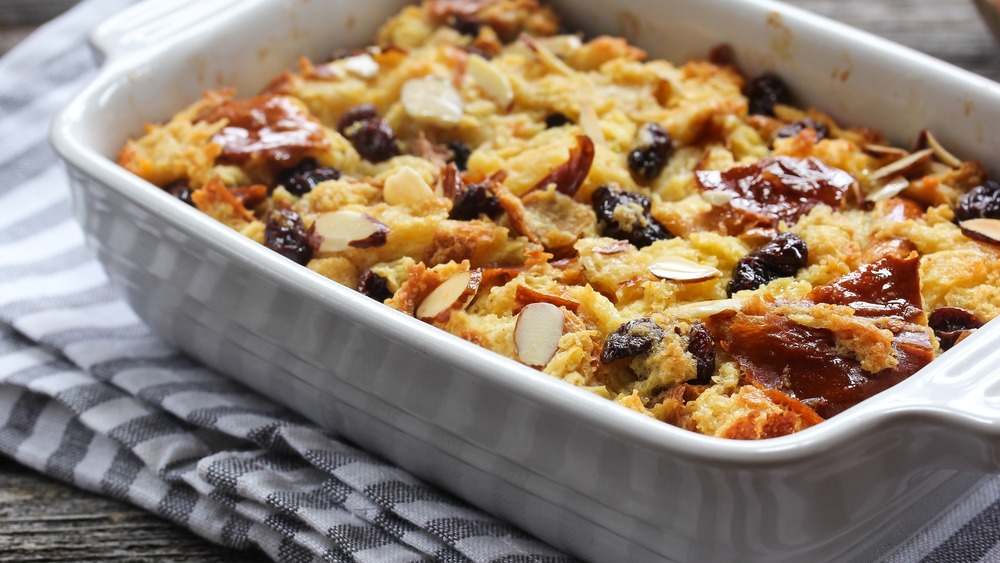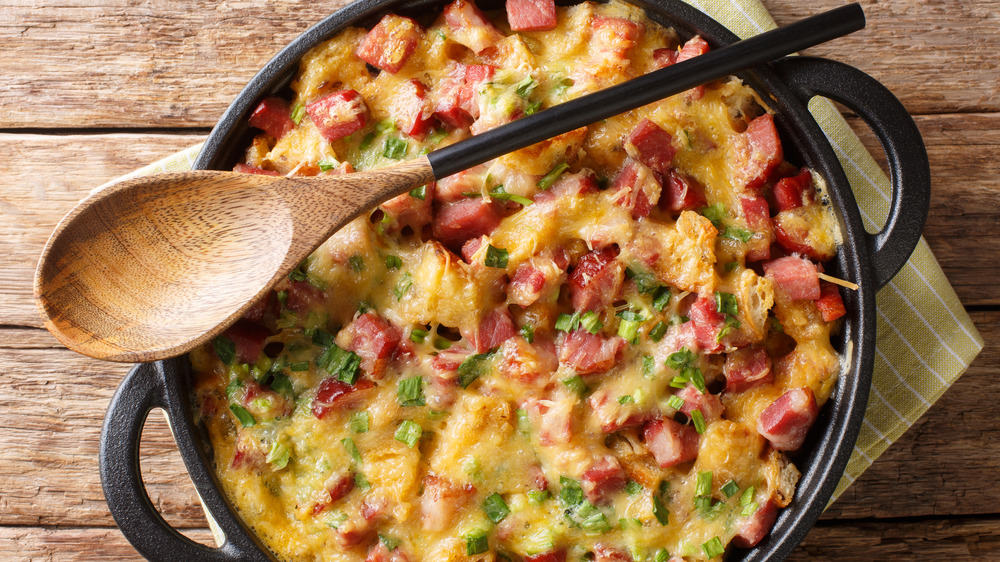The Real Difference Between A Strata And Bread Pudding
You're at brunch with your friends and one of them orders a slice of breakfast strata. But what arrives at your table a few minutes later looks exactly like the bread pudding you had for dessert last night. It's made with cubes of bread that are held together with some sort of eggy, creamy mixture. Sure, a lot of stratas are savory (made with ingredients like spinach and cheese) but bread pudding can be savory, too. And for as many stratas that are savory, there are just as many that are sweet as well — i.e. that can't be what sets the two dishes apart, right?
So what is the difference between strata and bread pudding? While the two might look alike and their names are often used interchangeably on restaurant menus, there actually is one tiny detail that separates one from the other. Here's what you need to know about strata that makes it unique from its bread pudding counterpart.
When it comes to strata and bread pudding, pay attention to the ratios
The difference between strata and bread pudding isn't the type of ingredients, but rather how much of said ingredients are used. According to Kitchn, it call comes down to the ratio of eggs to milk or cream that's used. In a strata, there are significantly more eggs than cream, which gives it more of that "eggy" flavor and texture. This is also why strata tends to be a staple on brunch tables and is more often savory than a bread pudding.
Bread pudding, on the other hand, often has a more proportionate amount of eggs and milk or cream, so the ratio is closer to 50:50. Kitchn explains that this is what gives bread pudding that milkier flavor and creamier, more custard-like texture. The higher ratio of cream to eggs also lends itself to sweeter dishes, which is why more bread puddings are served as dessert dishes rather than savory.

